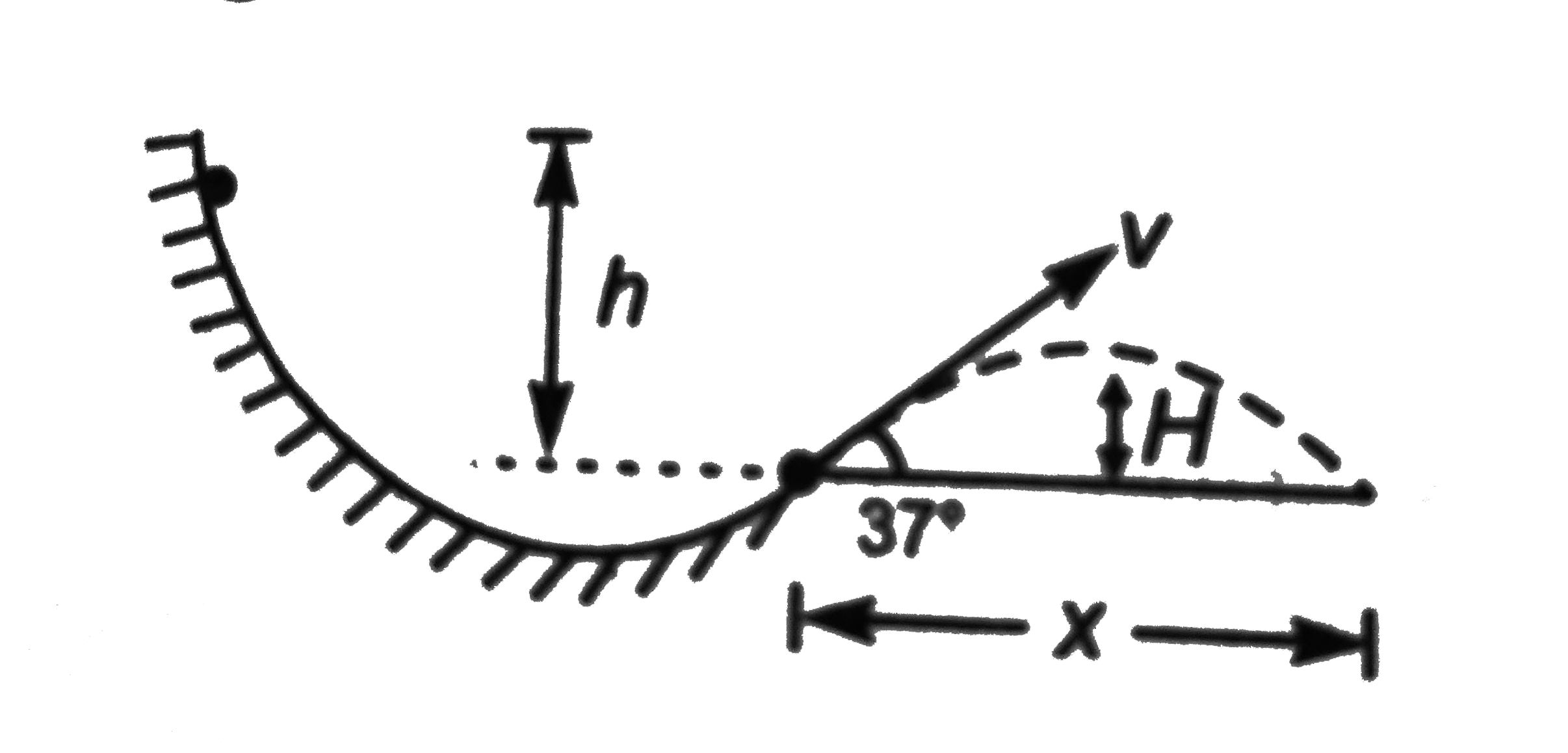Two identical balls are at rest side by side at the bottom of a hill. Sometime after ball A is kicked up the hill, ball B is given a kick up the hill. Ball A is headed downhill when it passes ball B headed up the hill. At the instant when ball A passes ball B, it has the same
Position and velocity as ball B
Position and acceleration as ball B
Velocity and acceleration as ball B
Displacement and velocity as ball B
The correct Answer is:B
Position and acceleration of ball A is same as that of ball B at the instant when ball A passes ball B.
Topper's Solved these Questions
- BOOK - SCIENCE OLYMPIAD FOUNDATION CHAPTER - MOTION EXERCISE - ACHIEVERS SECTION (HOTS)5videos
MOTION
- BOOK - SCIENCE OLYMPIAD FOUNDATION CHAPTER - GRAVITATION EXERCISE - ACHIEVERS SECTION (HOTS)5videos
GRAVITATION
- BOOK - SCIENCE OLYMPIAD FOUNDATION CHAPTER - NSO QUESTION PAPER 2016 SET A EXERCISE - ACHIEVERS SECTION2videos
NSO QUESTION PAPER 2016 SET A
Similar Questions
Two racing cars of masses m1 and m2 are moving in circles of radii r1 and r2 respectively. Their speeds are such that each makes a complete circle in the same duration of time t. The ratio of the angular speed of the first to the second car is
07:14View SolutionConsider the following figures 1 and 2. In figure 1, the mass of the body A in air is 0.2 kg. The mass of the water container (with water in it) is 0.5 kg. In figure 2, when A is completely immersed in the water of the container B, the readings of the respective balances change as shown.

What is the value of X?07:14View SolutionRefer to the given graph and fill in the blanks by choosing an appropriate option.

The displacement of the particle from its initial position at the end of 15 s and 30s is (i) –––––––––– and (ii) ––––––––––– respectively. The average velocity of the particle between 15 s and 25 s and 0 s to 30s is (iii) ––––––––––––– and (iv) ––––––––––– respectively.
 02:06View Solution
02:06View Solution
A tennis ball, starting from rest, rolls down the hill in the drawing. At the end of the hill the ball becomes airborne, leaving at an angle of 37∘ with respect to the ground treat the ball as a thin-walled spherical shell.
Q. Maximum height reached by ball H above ground is04:13View SolutionA tennis ball, starting from rest, rolls down the hill in the drawing. At the end of the hill the ball becomes airborne, leaving at an angle of 37^(@) with respect to the ground treat the ball as a thin-walled spherical shell. Q. Range x of the ball is
02:06View SolutionWhy does a tunnis ball bounce heigher on a hill than on plains?
03:27View SolutionA ball, initially at the top of the inclined hill, is allowed to roll down. At the bottom its speed is 4 m/s. Next the ball is again rolled down the hill, but this time it does not start from rest. It has an initial speed of 3 m/s. How fast is it going when it gets to the bottom ?
06:23View SolutionWhy does a tunnis ball bounce heigher on a hill than on plains?
01:17View SolutionThe ball A collides elastically with an identical ball B with a speed v. The ball B touches another identical ball C. The velocity of C, after the impact, is equal to
04:47View SolutionA ball, intially at the top of the inclined hill, is allowed to roll down. At the bottom its speed is 4 m/s. Next the ball is again rolled down the hill, but this time it does not start from rest. It has an initial speed of 3 m/s. How fast is it going when it gets to the bottom ?
View SolutionA tennis ball jumps higher at hills than at planes. Explain.
05:40View SolutionA ball, intially at the top of the inclined hill, is allowed to roll down. At the bottom its speed is 4 m/s. Next the ball is again rolled down the hill, but this time it does not start from rest. It has an initial speed of 3 m/s. How fast is it going when it gets to the bottom ?
03:39View Solutionएक खिलाड़ी बहुत सारी गेंदो को लात मारता है तो कौनसी गेंद हवा में सबसे ज्यादा समय रहेगी?
04:44View SolutionWhy a tennis ball bounces higher on hills than in plain?
01:22View SolutionA tennis ball, starting from rest, rolls down the hill in the drawing. At the end of the hill the ball becomes airborne, leaving at an angle of 37^(@) with respect to the ground treat the ball as a thin-walled spherical shell. Q. Maximum height reached by ball H above ground is
View Solution
A tennis ball, starting from rest, rolls down the hill in the drawing. At the end of the hill the ball becomes airborne, leaving at an angle of 37∘ with respect to the ground treat the ball as a thin-walled spherical shell.
Q. Range x of the ball is03:36View Solution
